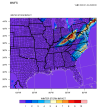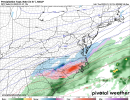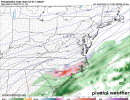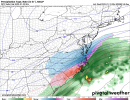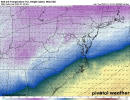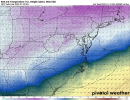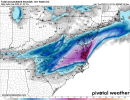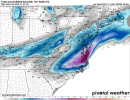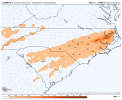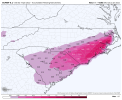The globals have a similar look with doing it mostly with the northern stream wave sharpening a bit and sliding west to east (UKMet is flattest with the wave it looks like and the most suppressed). The NAM/RDPS are incorporating the southern stream wave more
All models seem to want to pull the northern stream farther southwest so far tonight, if this is a multi cycle trend I could see globals trend towards the NAM/RDPS. Very unpredictable trends, after the 18z euro I was ready to throw in the towel. Seems the NW trend has commenced now though
Sent from my iPhone using Tapatalk


